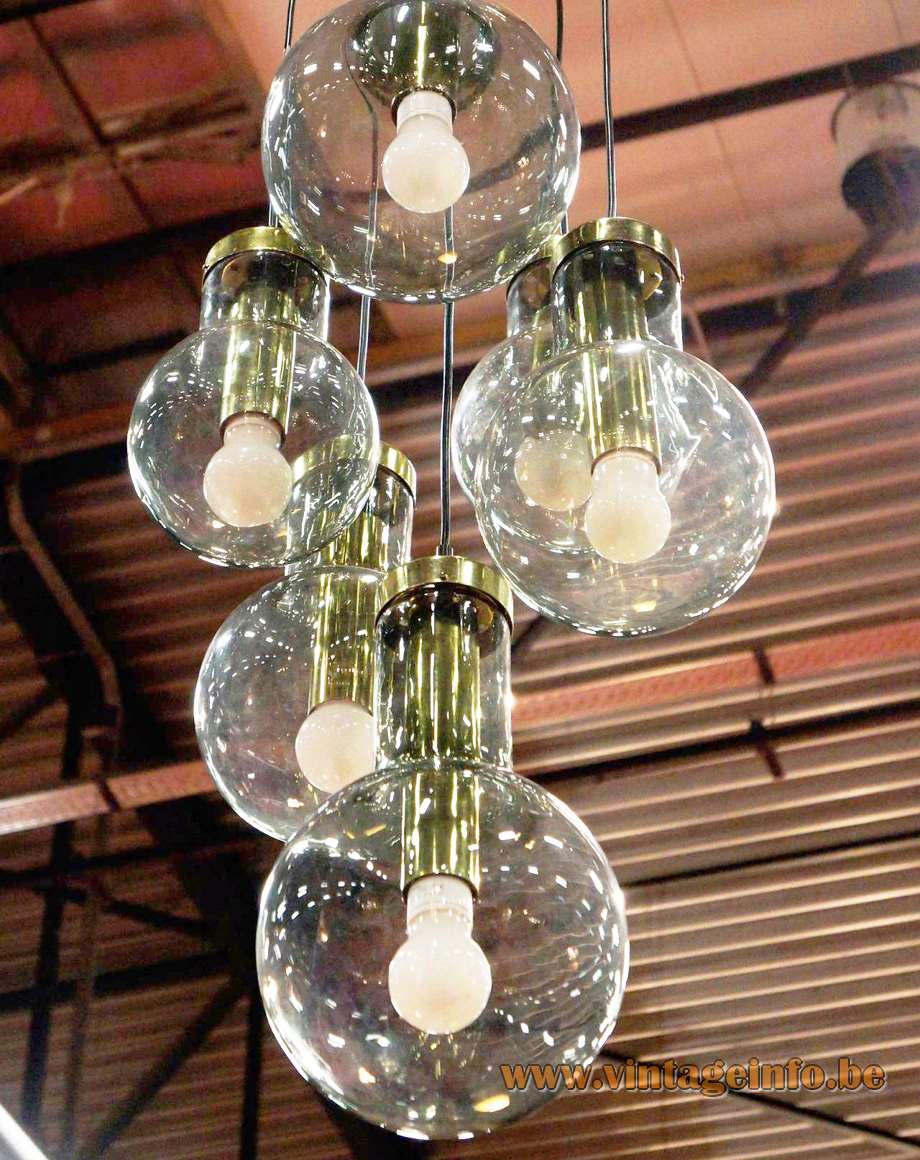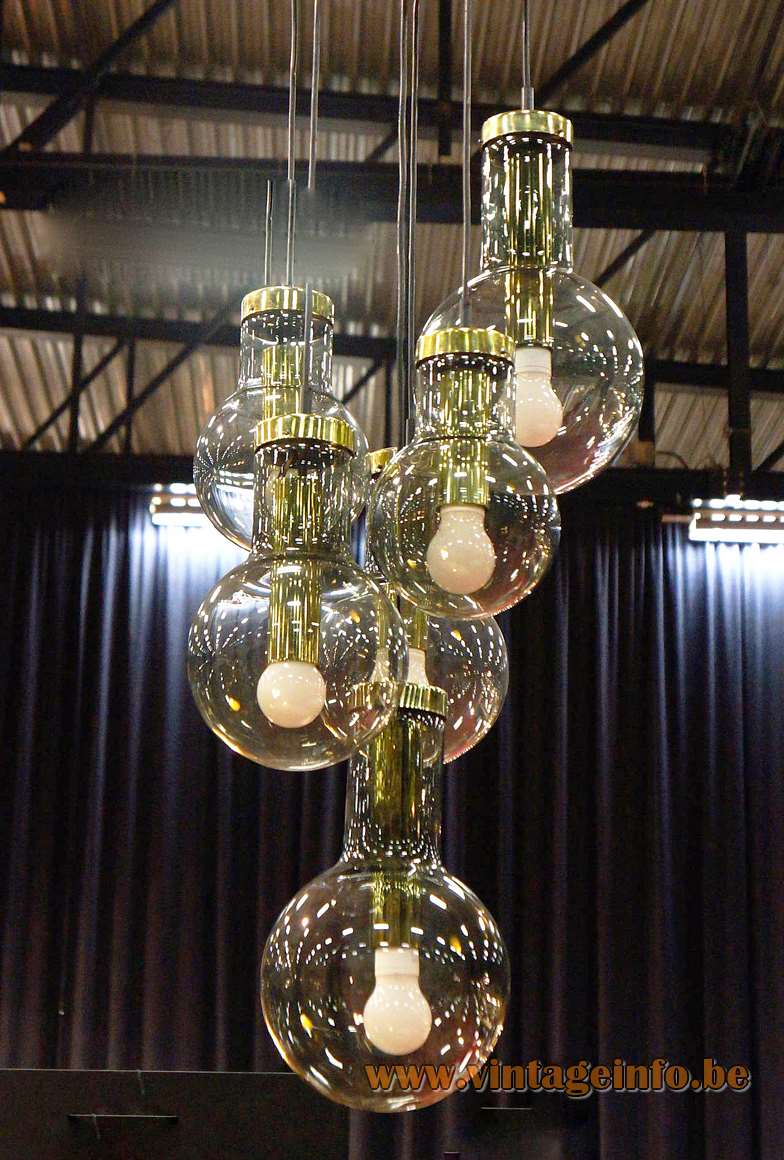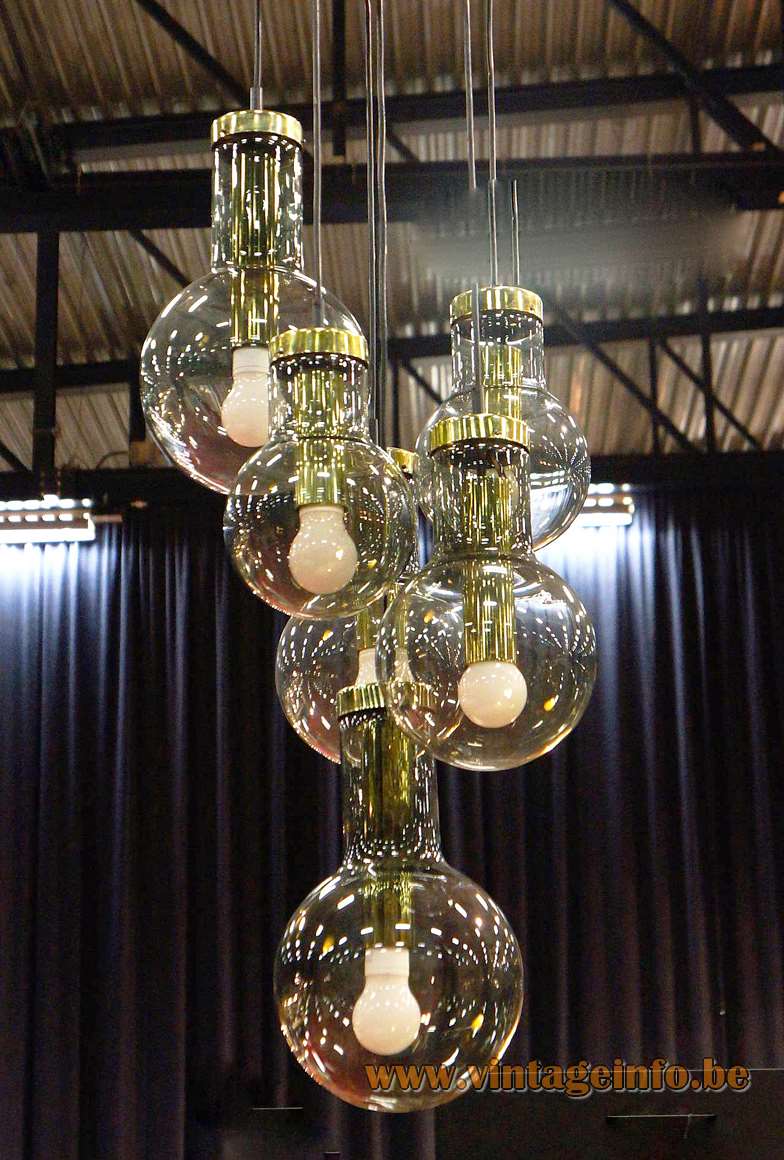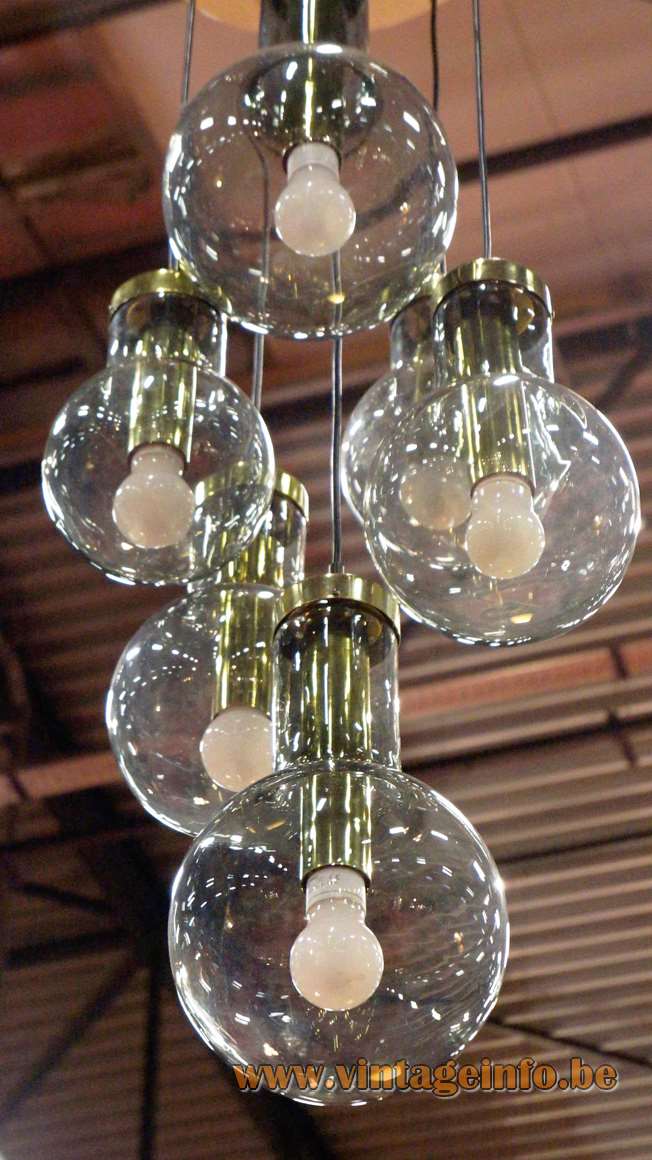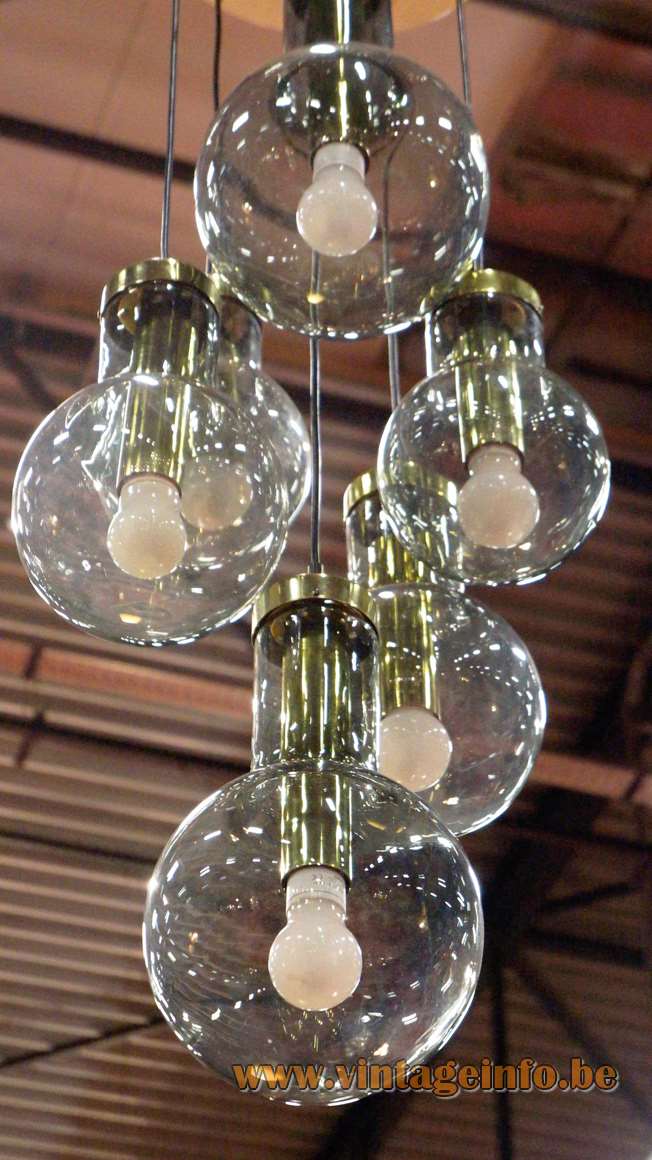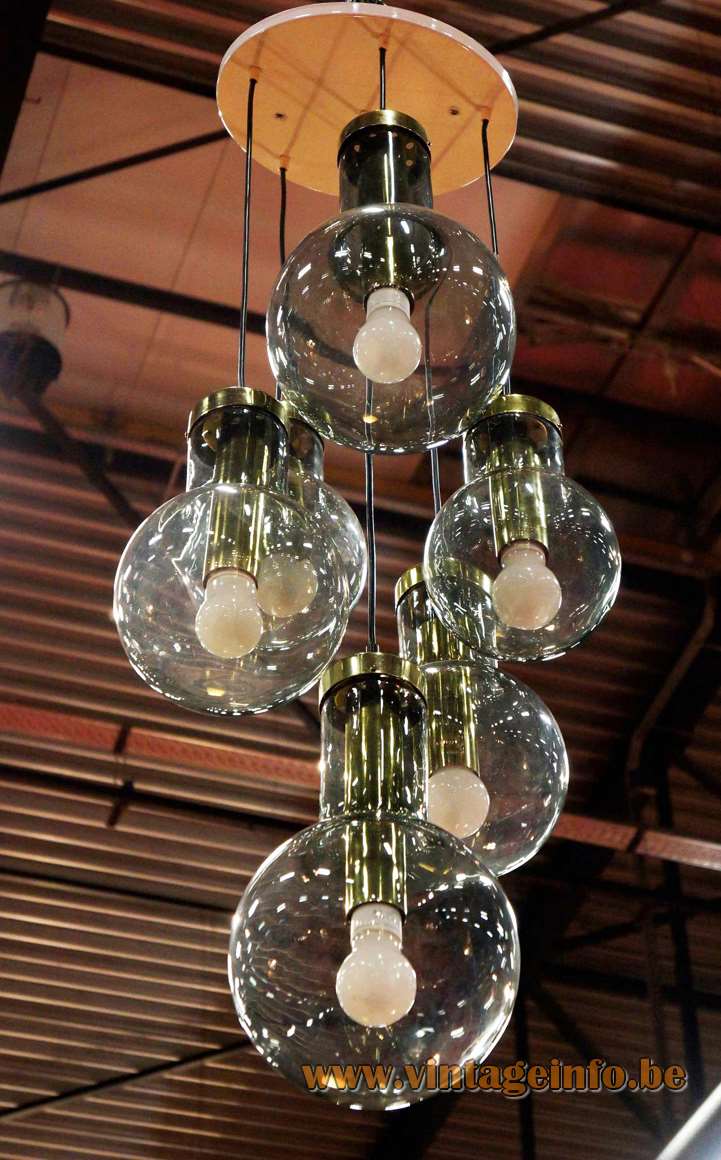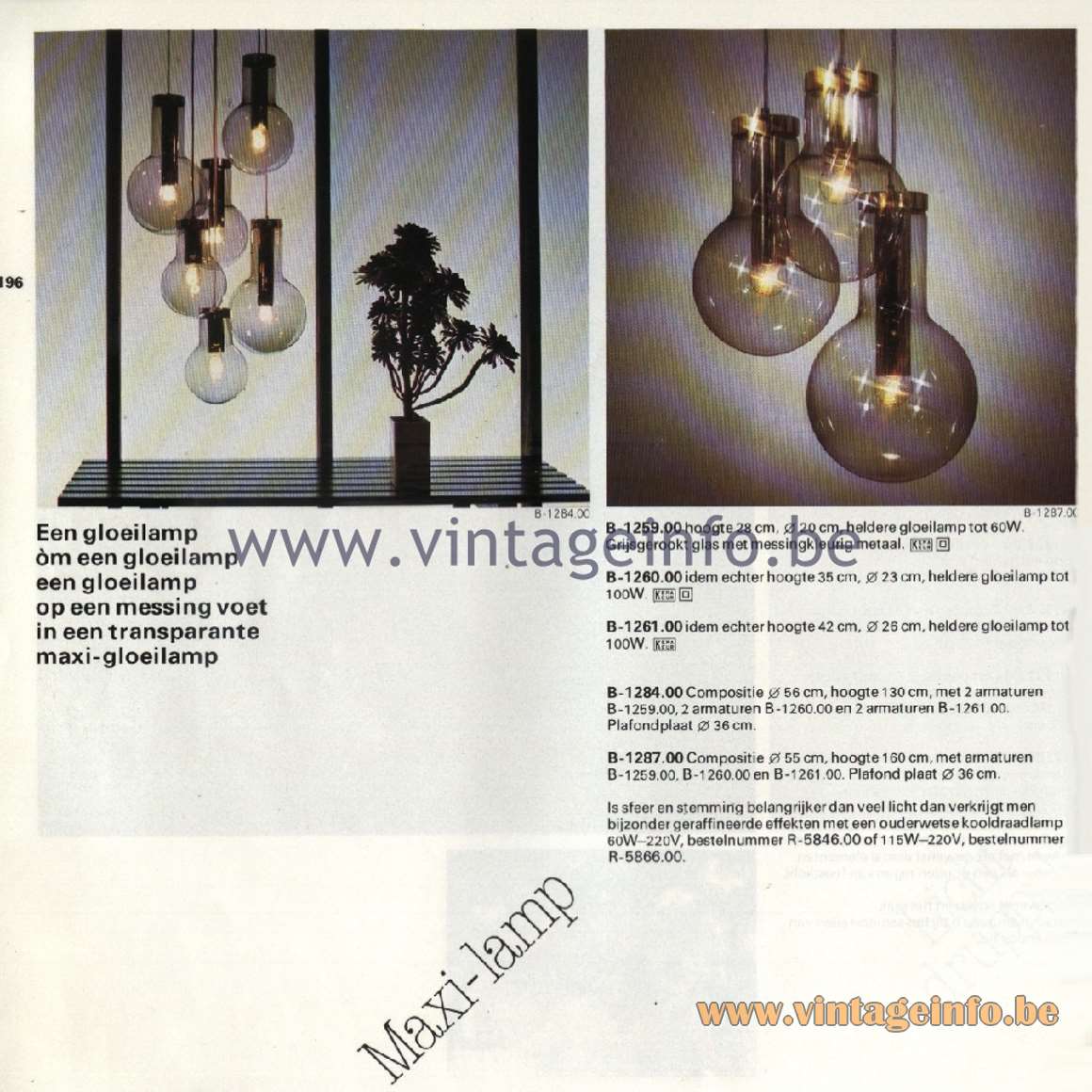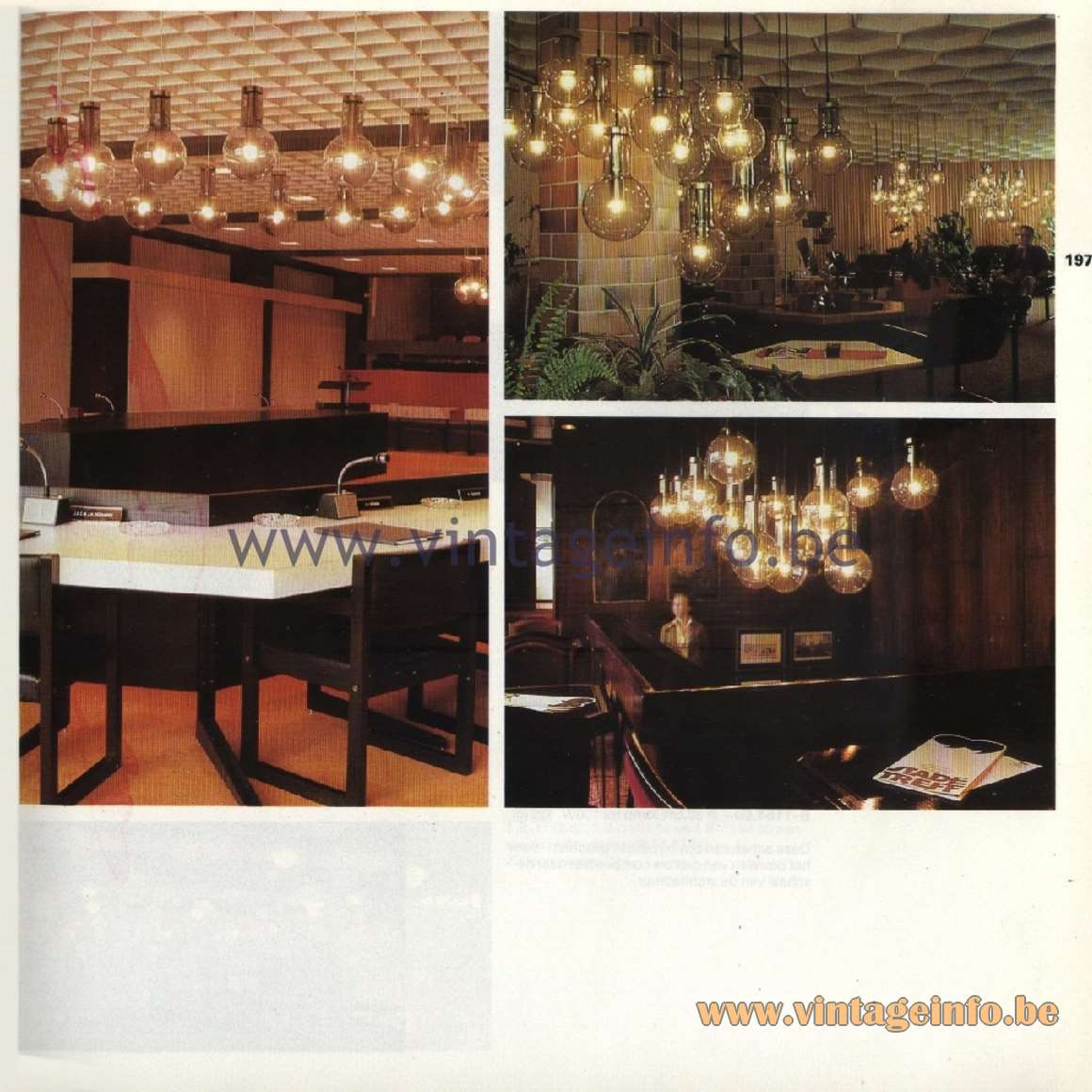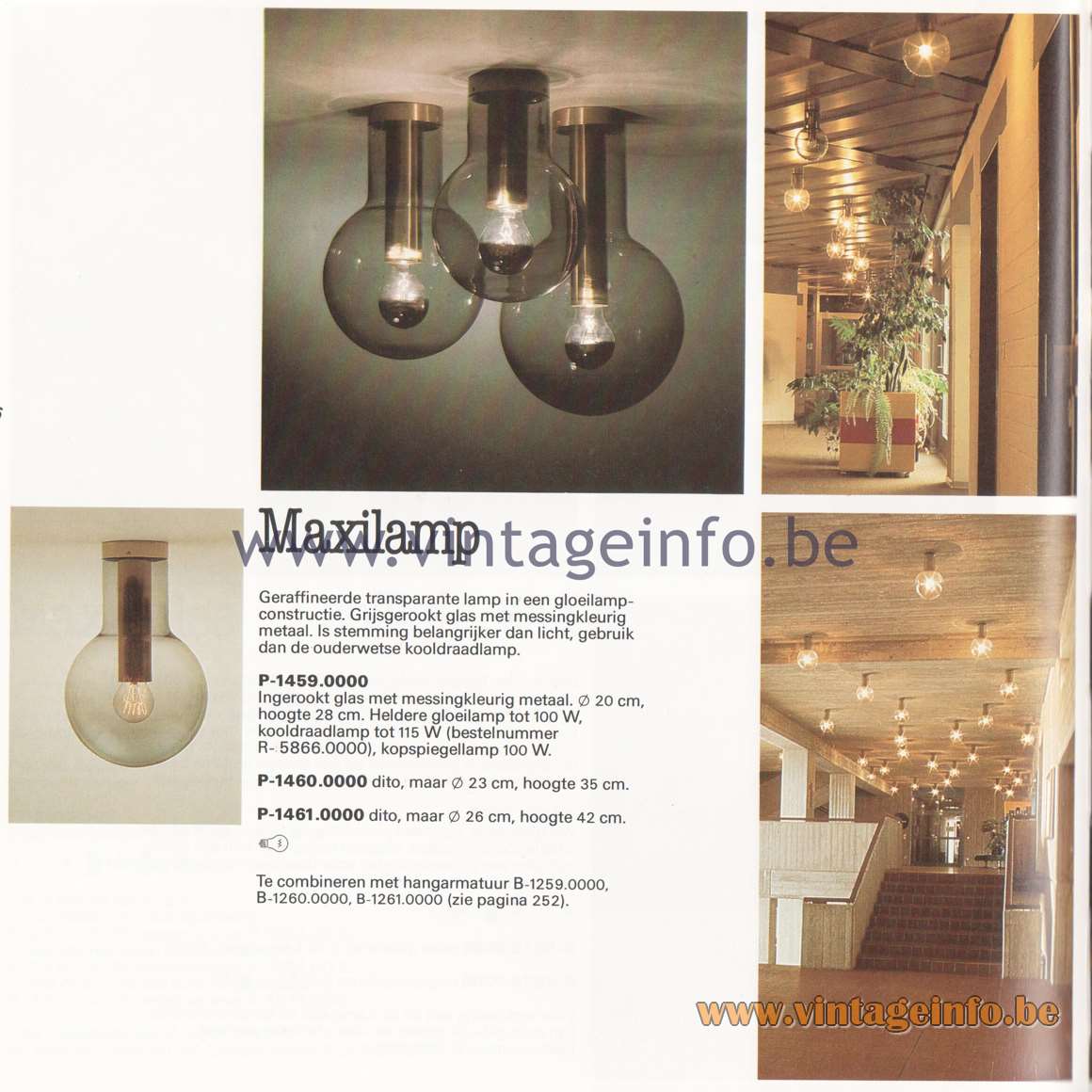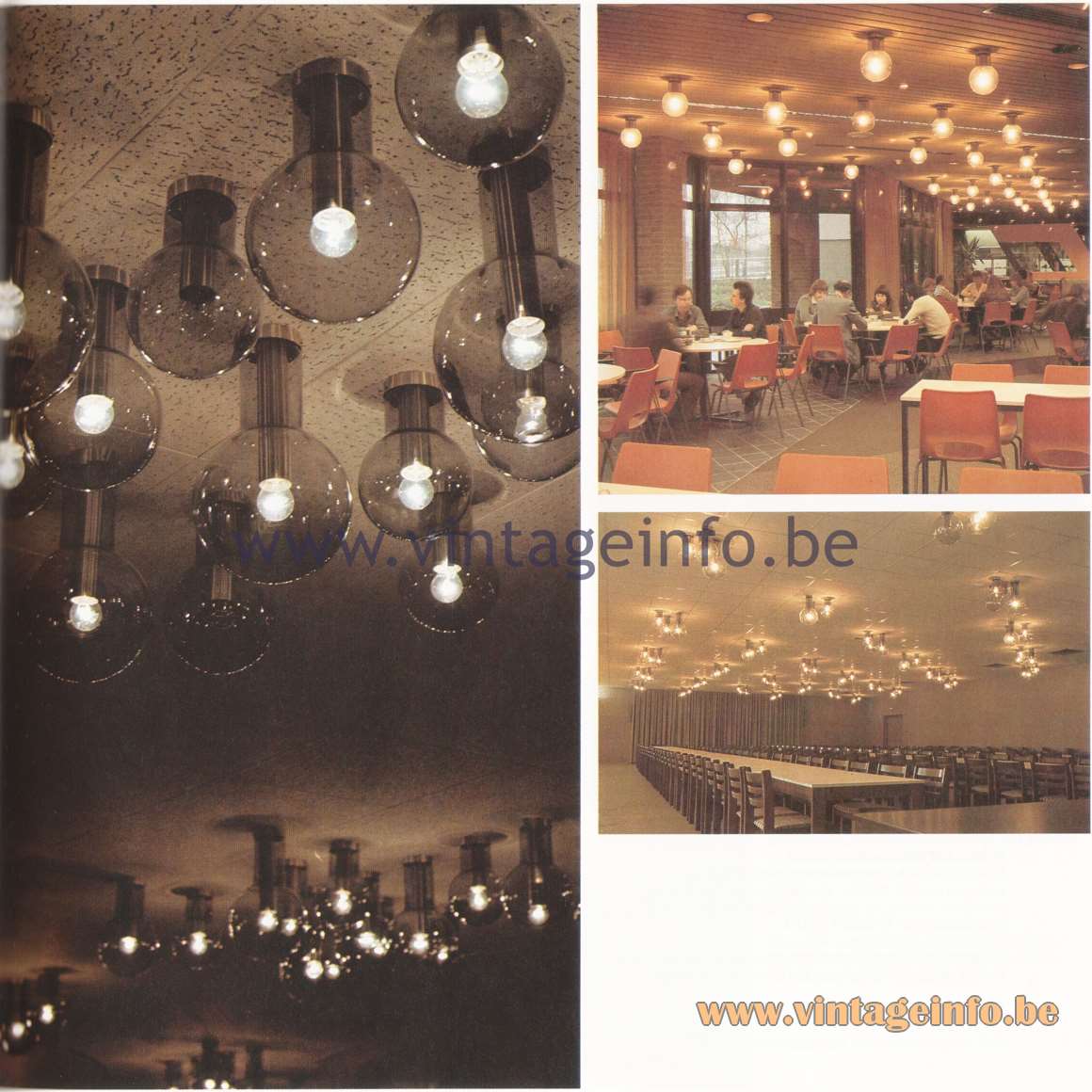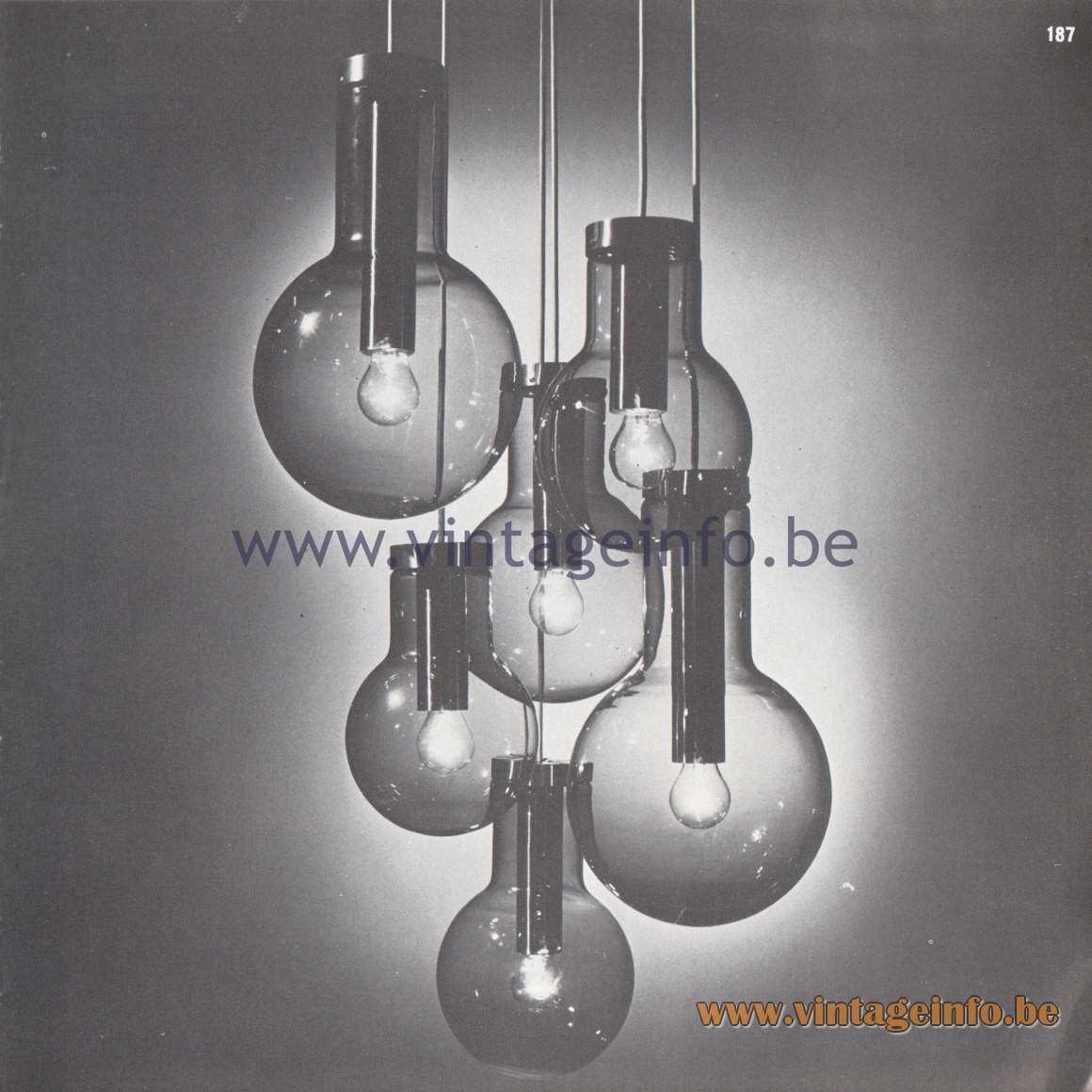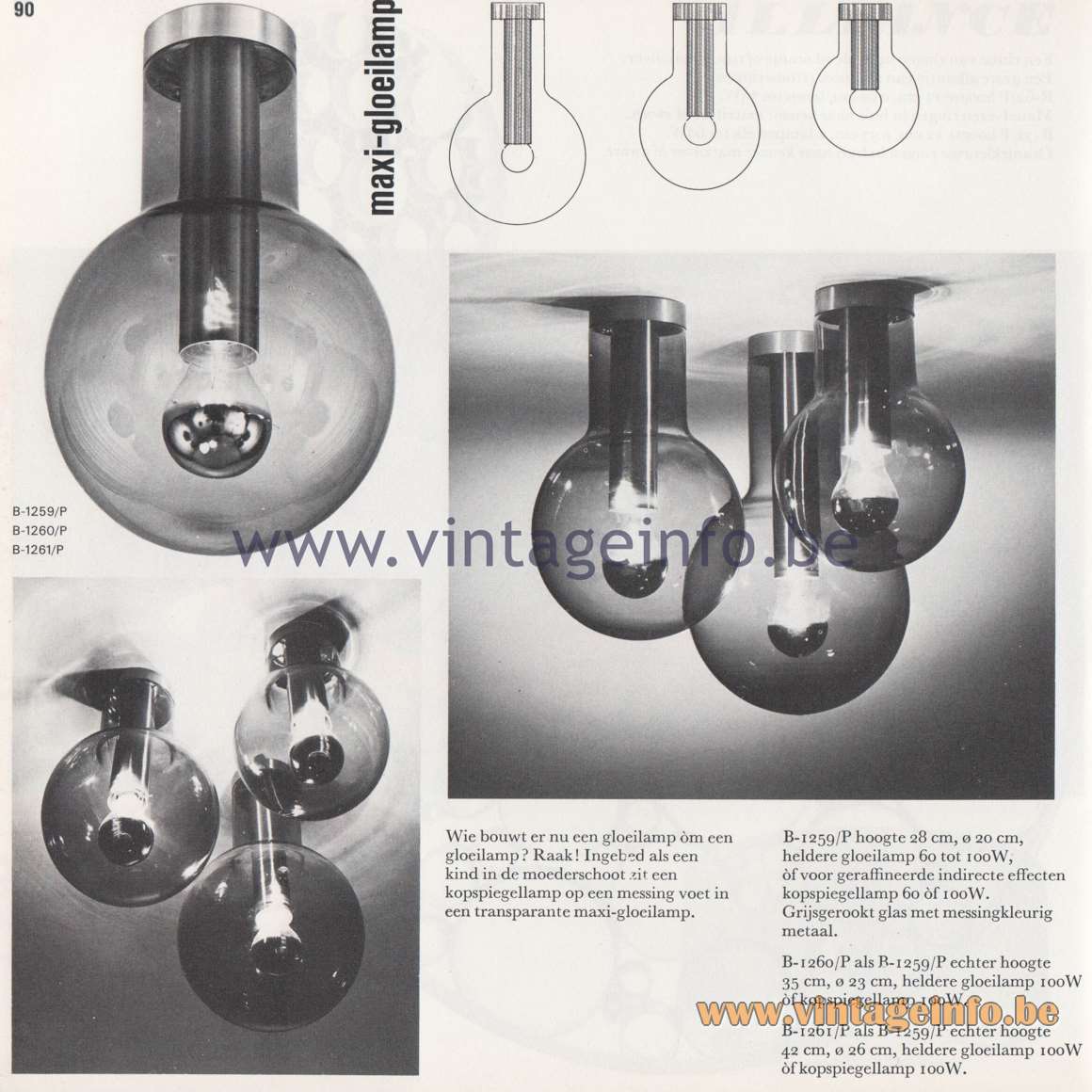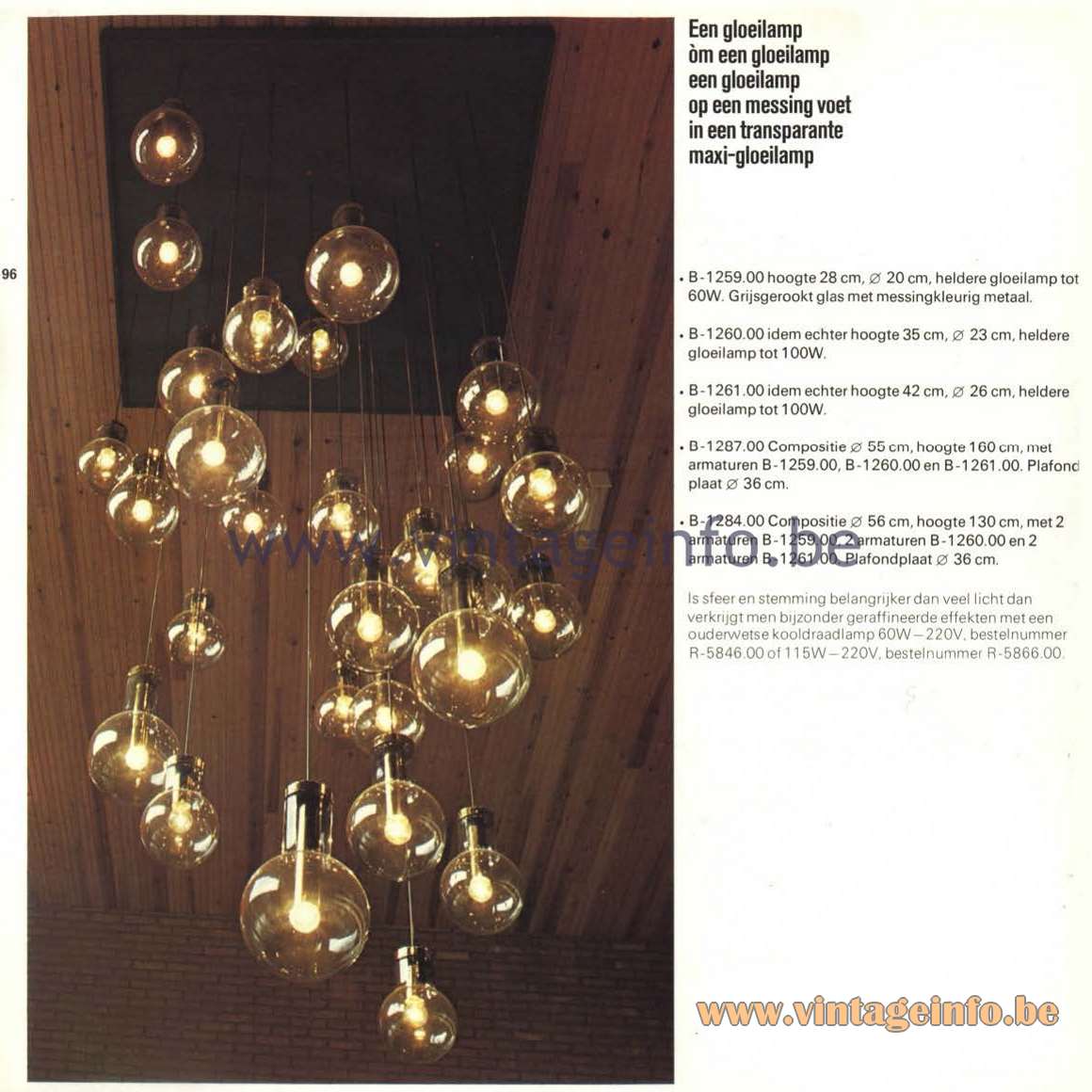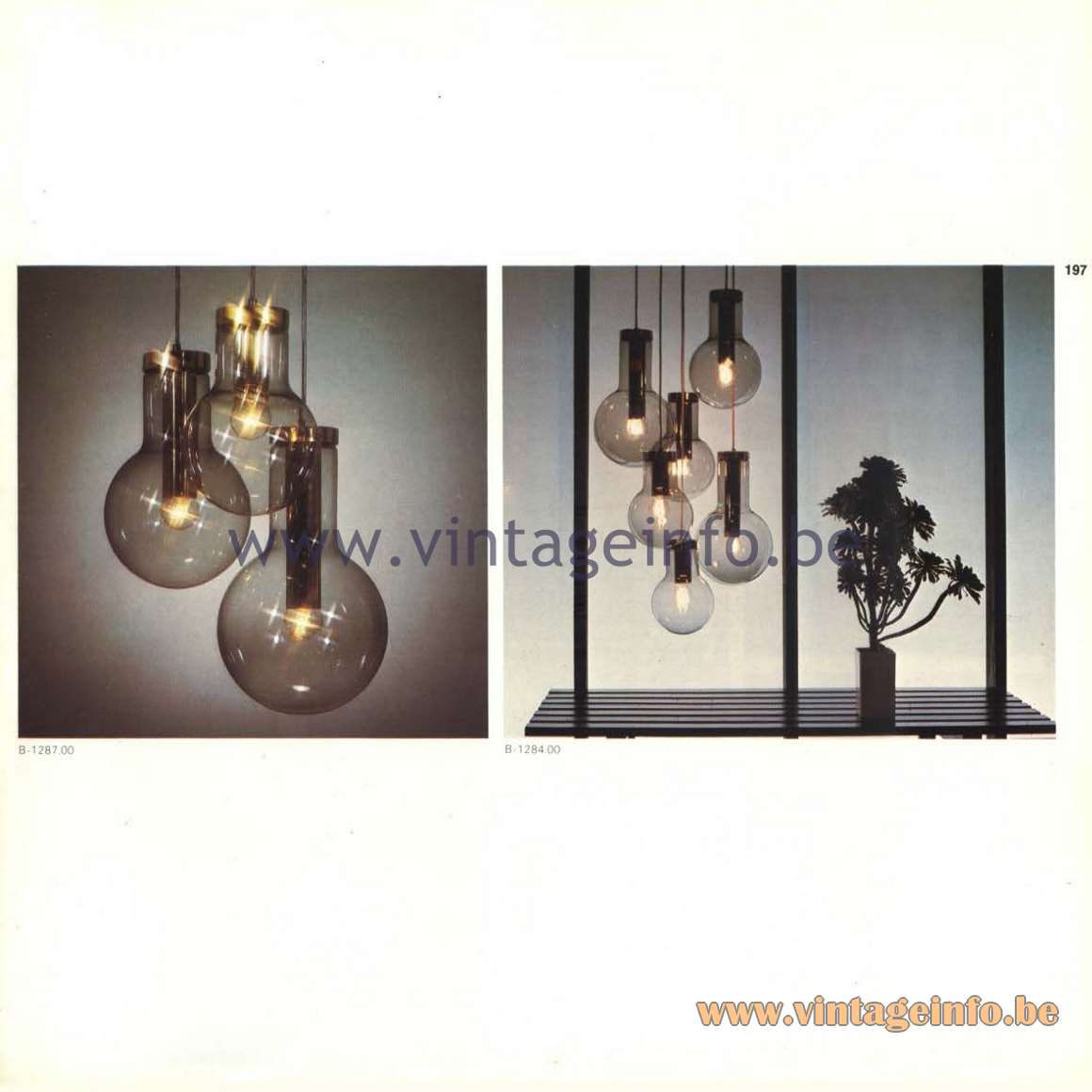Raak Catalogue 11, 1978 – Maxi-Lamp
Raak Catalogue 12, 1982 – Maxilamp
Links (external links open in a new window)
Vintageinfo
The Raak Maxi-Lamp pendant chandelier in catalogue 11, 1978
Raak Maxi-Lamp Pendant Chandelier
Materials: Brass or brass plated metal tubes, lid & parts. Smoked crystal glass globes lampshades, bulb style. Porcelain E27 sockets.
Cord Length: 200 cm / 39.37’’ – adjustable
Width: ∅ 50 cm / 19.68”
Ceiling Plate: ∅ 37 cm / 14.56”
Glass Globes: 20 x 28 cm / 23 x 35 cm / 26 x 42 cm – 7.87 x 11.02” / 9.05 x 13.77” / 10.23 x 16.53”
Electricity: 6 bulbs E27, 2 x 60 watt, 4 x 100 watt maximum, 110/220 volt.
Any type of light bulb can be used, but preferably a clear normal/classic light bulb or a silver cupped bulb.
Period: 1960s, 1970s, 1980s – Mid-Century Modern.
Designer: To be appraised.
Manufacturer: Raak, Amsterdam, The Netherlands.
Other versions: This type of chandelier is named Compositie (composition). All cascading combined chandeliers by Raak are named “compositions”. The lamps (in 3 sizes) were also sold separate and as a flush mount. These lamps are often named Maxi-Globe. The Globe is another famous Raak lamp, you can find it over here.
Model Numbers: B-1259, B-1260, B-1261, B-1284, B-1287. First the suffix /P was added, later it became 00 and 0000.
In 1968 it was named Maxi-Gloeilamp (Maxi Light-Bulb), later it became Maxi-lamp and Maxilamp.
These lamps appear in the Raak catalogues from 1968 until 1982.
Raak
The Dutch company “Raak Lichtarchitectuur” (Light Architecture) was founded in 1954 by Carel O. Lockhorn (18 June 1923 – 6 October 2004), a previous employee of Philips Lighting Eindhoven. Raak, which means “to hit” in Dutch, implies design which precisely “hits the nail on the head”.
Raak is best known for their organic modern design of the 1960s and 1970s which combined glass & metals for a sophisticated futuristic style.
The light company collaborated with several international designers and architects, including Bertrand Balas, Evert Jelle Jelles, Frank Ligtelijn, Ger Vos, Jan Jasper Fayer, Li Helo, Maija-Liisa Komulainen, Nan Platvoet, Nanny Still-Mackinney, Nico Kooi, Sergio Asti, Tapio Wirkala, Willem van Oyen and many others.
Raak Amsterdam also collaborated with other companies. They worked with the German Peill + Putzler for the Raak Globe lamps. Peill + Putzler produced the glass. They also sold lamps made by Peill + Putzler, such as a pendant light designed by Aloys Ferdinand Gangkofner. For the Raak Discus the glass was made by Bega, also a German company. For the Stalactites flush mounts a cooperation with the Belgian Val Saint Lambert was undertaken in the late 1950s. Raak also sold some lamps that were produced by Staff Leuchten (Staff & Schwarz Leuchtenwerke GMBH) from Germany and several other companies.
Carel Lockhorn
Carel Lockhorn sold the company in 1974 to ITT but remained a director until 1977. In 1980 Raak merged with BIS Lighting from Aalsmeer, also in The Netherlands and was renamed into BisRaak. In 1986 the Raak company became independent again. The company got a business appearance and only the colours white, black and grey were still processed.
In 1999, Raak merged with Artilite B.V. and Indoor B.V. and became CLA: Centrum voor Lichtarchitectuur B.V. in Drachten (Centre for Light Architecture). The Centre for Lighting Architecture was founded by Egbert Keen. The company was declared bankrupt on 19-05-2011.
Raak Catalogue 8, 1968 – Maxi-Gloeilamp
Raak Catalogue 9, 1972 – Maxi-Lamp
Many thanks to Frank from Flowermountain.be for the pictures and the enthusiasm.
